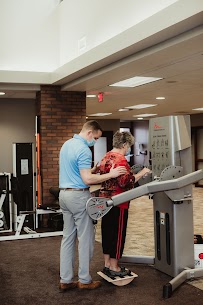Aging gracefully isn’t just about looking good; it’s about maintaining mobility, strength, and independence well into our later years. As we age, our bodies inevitably face challenges such as decreased mobility, arthritis, and osteoporosis. However, physical therapy for the elderly offers a beacon of hope, providing tailored strategies that cater to the unique needs of seniors, empowering them to lead active, fulfilling lives.

Understanding the Unique Needs of the Elderly
The golden years bring with them a host of physical challenges. Decreased mobility, joint stiffness, and reduced muscle mass are common, impacting not just physical health but mental well-being too. The psychological effects of these changes can be profound, as loss of independence and fear of injury lead to decreased activity levels. Yet, maintaining an active lifestyle is crucial for aging gracefully, making physical therapy an invaluable tool in the arsenal against age-related decline.
Tailored Physical Therapy Strategies
Physical therapy for the elderly isn’t a one-size-fits-all affair. It requires a nuanced, individualized approach, starting with a comprehensive assessment to develop a personalized therapy plan. Here are some key strategies:
- Strength Training: Essential for maintaining muscle mass and bone density, strength training can be adapted to suit varying levels of ability, ensuring safety while promoting physical health.
- Balance and Coordination: Balance exercises are a cornerstone of elderly physical therapy, crucial for preventing falls—a leading cause of injury among seniors. Simple activities like standing on one foot or walking heel-to-toe can significantly improve balance.
- Flexibility and Mobility: Maintaining flexibility aids in mobility, reduces pain, and enhances the quality of life. Gentle stretching exercises, tailored to individual capabilities, can make daily activities smoother and more enjoyable.
- Pain Management Techniques: Chronic pain is a common complaint among the elderly. Physical therapy offers various non-pharmacological pain management techniques, such as heat and cold therapy, massage, and specific exercises that alleviate pain without the side effects of medication.
Incorporating Technology and Innovative Approaches
The field of physical therapy is continually evolving, with technology playing an increasingly significant role. Assistive devices, such as walkers and canes, are tailored to individual needs, enhancing mobility and independence. Meanwhile, innovations like virtual reality and telehealth sessions are making therapy more accessible and engaging, breaking down barriers to effective treatment.
Creating a Supportive Environment
The journey to empowerment through physical therapy isn’t a solo endeavor. Family and caregiver support is pivotal, providing encouragement and ensuring the continuation of exercises at home. Physical therapists also play a crucial role, fostering a supportive, understanding environment that motivates seniors to persevere through challenges.
Overcoming Common Barriers
Despite the benefits, many seniors are hesitant to engage in physical therapy. Fears of injury, misconceptions about physical activity in old age, and a lack of motivation can all pose significant barriers. Overcoming these requires a concerted effort from therapists, families, and the seniors themselves, emphasizing the safety, efficacy, and life-enhancing benefits of tailored physical therapy.
Key Strategies for Motivating Elderly Patients:
- Education: Dispelling myths about aging and activity, emphasizing the safety and benefits of tailored exercises.
- Goal Setting: Working with seniors to set achievable, meaningful goals that provide a sense of purpose and accomplishment.
- Variety: Incorporating a range of activities to keep therapy engaging and enjoyable.
- Encouragement: Providing constant positive reinforcement and celebrating every milestone, no matter how small.

Conclusion
Tailored physical therapy offers a pathway to empowerment for the elderly, enabling them to age gracefully with dignity, strength, and independence. By addressing the unique physical and psychological needs of seniors, physical therapy not only enhances mobility and reduces pain but also uplifts spirits, restoring a sense of self-reliance and joy in life’s later chapters.
If you or a loved one are navigating the challenges of aging, consider the empowering potential of physical therapy. Consult with a physical therapist to explore personalized options and take a proactive step towards aging gracefully. Remember, it’s never too late to improve your quality of life and reclaim your independence. Share this journey with others who might benefit, and together, let’s redefine what it means to age gracefully.

